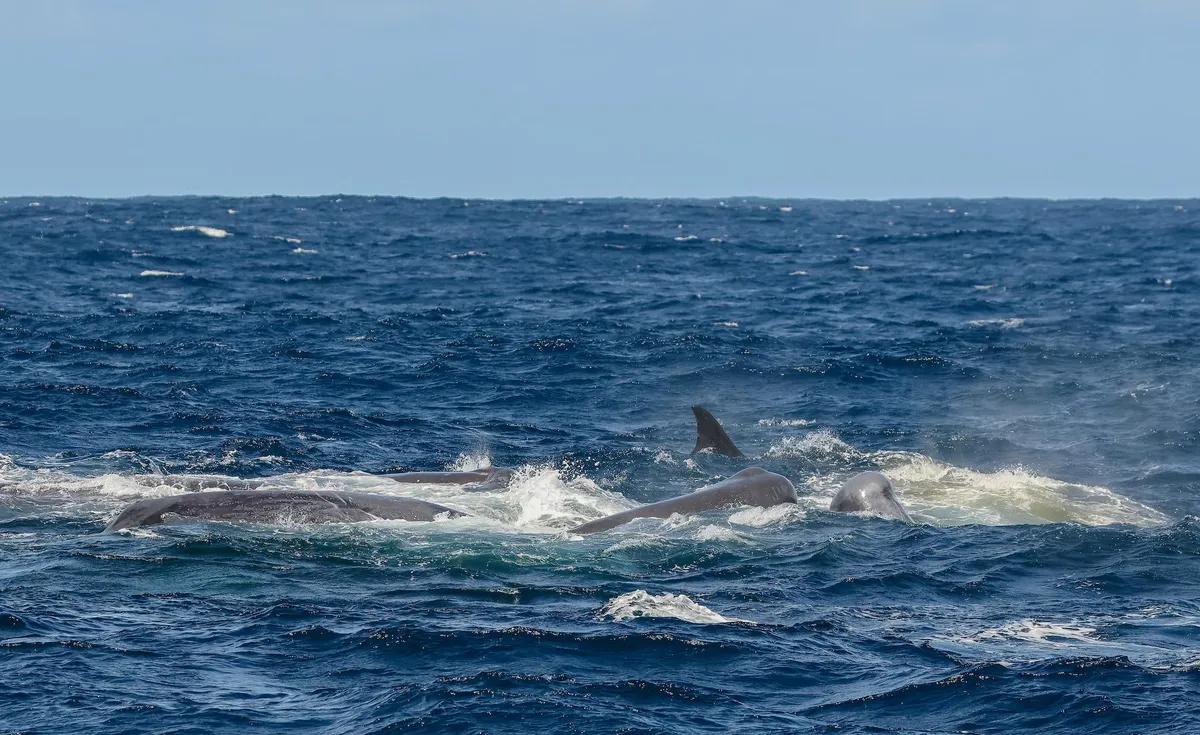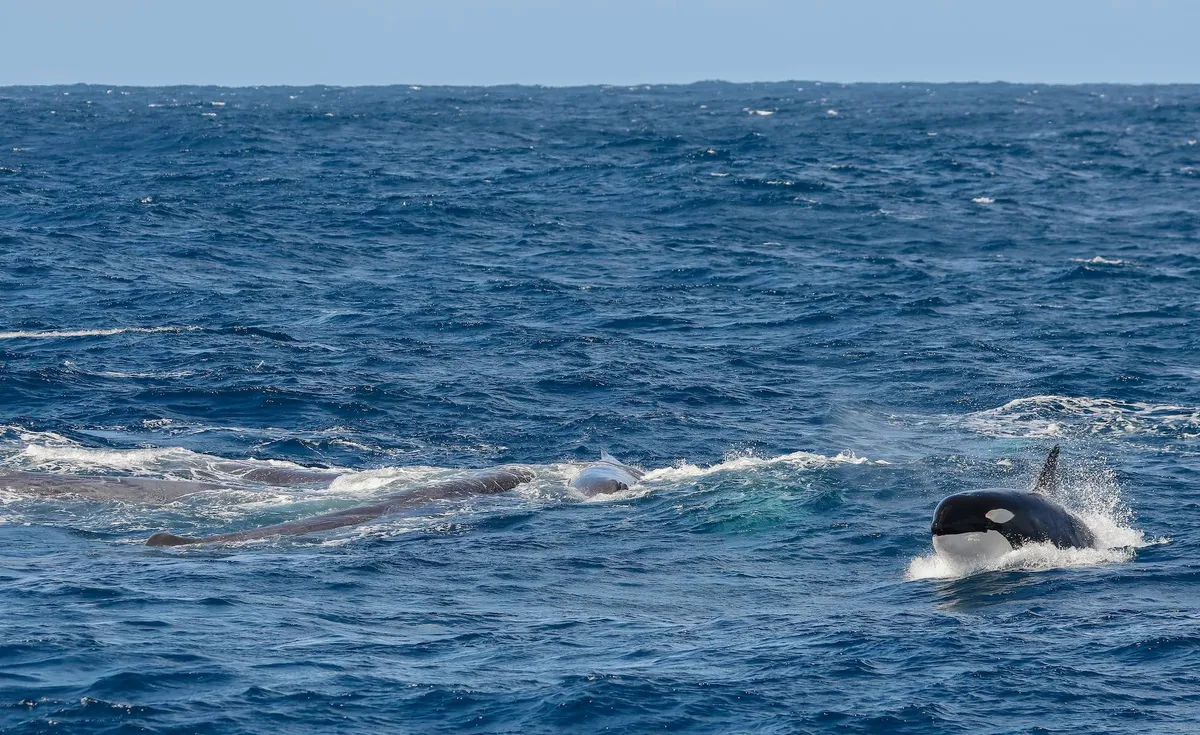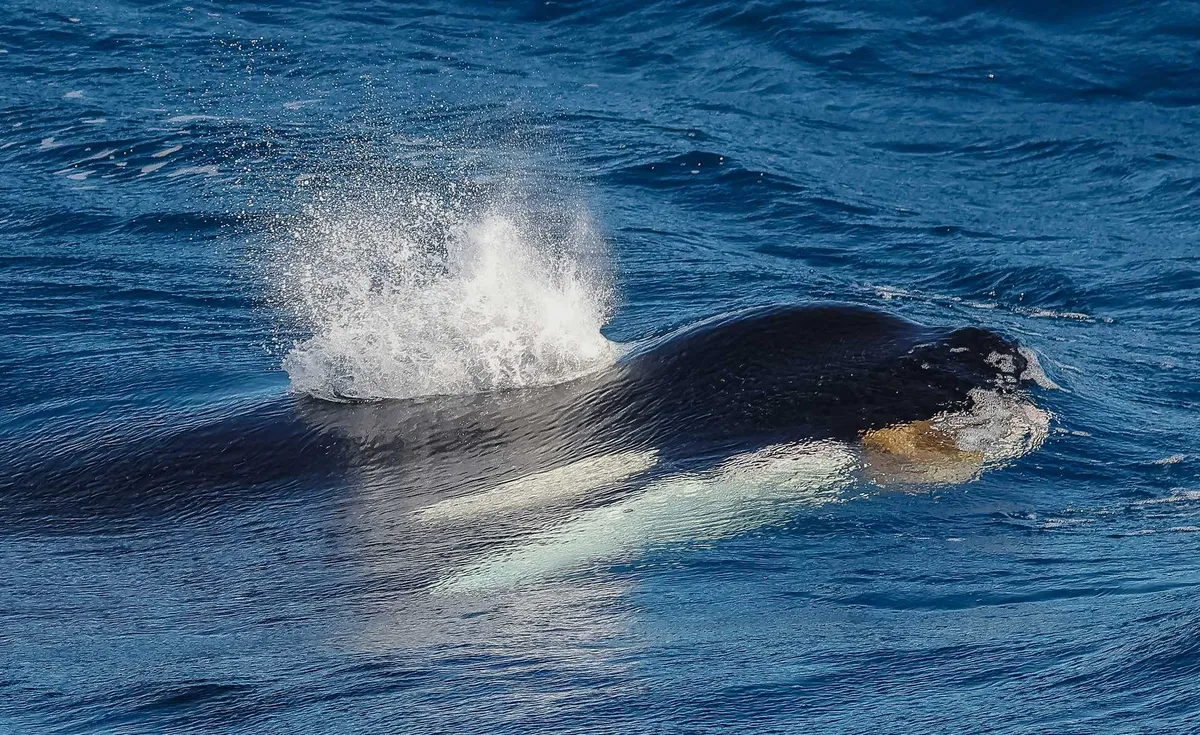Guests on a whale watching trip in Bremer Bay, Western Australia, had a strange experience that has left marine biologists scratching their heads.
They observed what appeared to be a pod of sperm whales defending themselves from a killer whale attack using a huge cloud of faeces – but was this on purpose, was it a chance occurrence or did the whales just have the crap scared out of them?
Pursuing a mystery
What started off as a quiet day on the whale watching boat (the orcas were embarking on long, deep dives that indicate foraging behaviour, meaning guests only had brief glimpses of them at the surface) would soon cause a splash in press around the world.
“The orcas just took off into a surge,” says Jennah Tucker, a marine biologist at Naturaliste Charters who observed the incident from the boat. Surging is when killer whales move quickly through the water, often when in pursuit of mammals. “You end up with this whitewash coming off their bodies,” she says.
The boat followed the orcas from a distance as they swam for about six nautical miles onto the continental shelf. “They moved from a depth of about 800 metres into only 80 metres of water, which we don’t usually see in this offshore population,” says Tucker.
For a moment, all was quiet. The observers watched, rapt, to see what would happen next. “We were expecting a beaked whale to surface. That’s what this population of orcas is most commonly sighted targeting for prey,” she says.

But it wasn’t a beaked whale. It was something much bigger. “A huge tail fluke of a sperm whale appeared,” she says, and they saw four adults and a juvenile in a tight huddle at the surface. “They appeared really exhausted,” she says, “and the orcas were swimming in these really tight circles around them.”
Sperm whales (Physeter macrocephalus) are the ocean’s largest toothed predator. Males can grow to 18 metres long and females to 11m, compared to male and female killer whales (Orcinus orca), which can reach around 9m and 7m respectively (although males in this population in Western Australia tend to be more like 8m in length). “Pretty much, the sperm whales are almost double their size,” says Tucker.
“I wish I could have seen my face, honestly, when I realised that it was sperm whales they were pursuing. It was the most intense pursuit I've seen in my time here – they were just charging,” says Tucker.
"It was the most intense pursuit I've seen in my time here – they were just charging”
The group of sperm whales started to create a circle with their heads facing inwards and their thrashing tails pointed outwards – a formation known as a rosette, which has been reported to occur when pods are trying to protect a calf or injured individual. Although it wasn’t clear from the boat, the adults may have been keeping the young whale in the centre for safety.
Then, a large, dark cloud rose to the surface among the sperm whales. “We initially thought it was blood,” says Tucker, “because, quite often, with a successful mammal predation you tend to get a big blood bubble. That’s how you know it’s all over.”

- Watch: Astonishing ‘explosion of life’ coral spawning in Cambodia stuns scientists
- 100 new ocean species discovered off the coast of New Zealand
- There’s a fish in Tasmania with hands instead of fins, and scientists are about to save it from extinction
Defensive defecation?
But then something strange happened. The orcas moved away from the sperm whales, staying in the area but keeping their distance. “We couldn't find any signs that they'd successfully hunted one of the sperm whales,” she says. Usually, when an orca has killed its prey, you might see an oil slick or scraps of animal tissue in the water. But they didn’t.
Then, one of the orca matriarchs approached and circled the vessel with a chunk of animal tissue in her mouth. But the meat was a yellowish colour, whereas flesh from whales or other marine mammals is usually a dark red, like beef, with white tissue.
“All of the signs we normally have weren't there but these orcas had moved off and they did have some sort of animal tissue in their mouths, which was really confusing,” says Tucker. “We’re still trying to figure out what exactly it was that they did take.”

Looking back at their footage when they returned to land, the group realised the dark cloud may have been faeces. When blood disperses through blue water, it has a greenish appearance, as does sperm whale faeces. “The two can look quite similar,” she says.
This type of predation isn’t unknown but kills have rarely been witnessed because sperm whales live in the deep sea, far offshore. Observed interactions between the species are more commonly harassment – such as orca stealing prey from sperm whales.
So, is ‘defensive defecation’ a tactic used by sperm whales to protect themselves? Experts aren’t sure. “Defecation in sperm whales has previously been observed in association with behaviours that indicate distress. However, it’s not known, for example, whether this is a stress response or an offensive technique to deter predators,” says Tucker.
Similarly, while the orcas moved off almost immediately after the poonado, this might not be the cause of their dispersal. “Because this type of interaction has been recorded so rarely, there definitely could be other drivers for the orcas’ response,” she explains.
To determine whether this was an attempted predatory event (“it definitely seemed that way to begin with,” says Tucker) or an intense example of orca harassment, the team looks forward to sharing observations with other researchers around the world to try to get to the bottom of what’s happening.
But whatever the driver of these interactions between orcas and sperm whales, Tucker says, “the whole thing was pretty mind blowing.”
More on marine life: